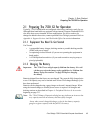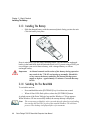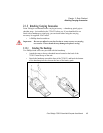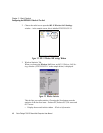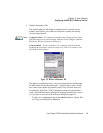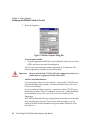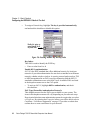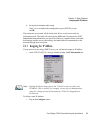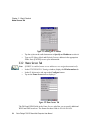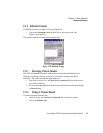
Psion Teklogix 7530 G2 Hand-Held Computer User Manual 21
Chapter 2: Basic Checkout
Configuring An IEEE 802.11 Radio In The Unit
Note: WEP cannot be disabled if you are using WPA or WPA-PSK authentication.
TKIP (Temporal Key Integrity Protocol) is an encryption protocol included
as part of the IEEE 802.11 standard for wireless LANs. Designed to
enhance WEP, TKIP uses the original WEP encryption but ‘wraps’ addi-
tional code at the beginning and end to encapsulate and modify it, encrypt-
ing each data packet with a unique encryption key.
Authentication
802.11 supports four subtypes of network authentication services: Open,
Shared, WPA, and WPA-PSK. Under Open authentication, any wireless
station can request authentication. The station that needs to authenticate
with another wireless station sends an authentication management frame
that contains the identity of the sending station. The receiving station then
sends back a frame that indicates whether it recognizes the identity of the
sending station.
Under Shared authentication, each wireless station is assumed to have
received a secret shared key over a secure channel that is independent from
the 802.11 wireless network communications channel.
Under WPA and WPA-PSK authentication, the use of 802.1x authentication
is required. For wireless networks without a Remote Authentication Dial-In
User Service (RADIUS) infrastructure, WPA supports the use of a pre-
shared key. For wireless networks with a RADIUS infrastructure, Extensi-
ble Authentication Protocol (EAP) and RADIUS is supported.
Network Key:
This text box is used to specify a 5 or 13 ASCII character sequence or an
equivalent 10 or 26 Hexadecimal digit sequence that matches the active
WEP key on the access point.



